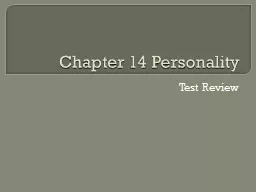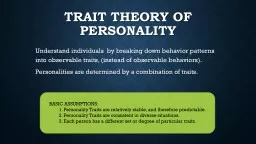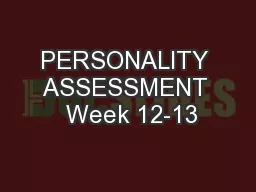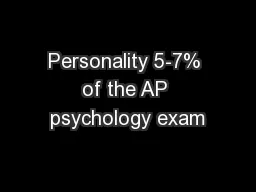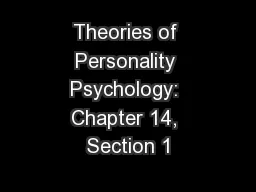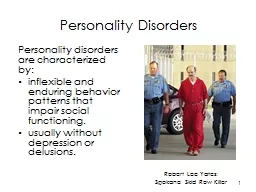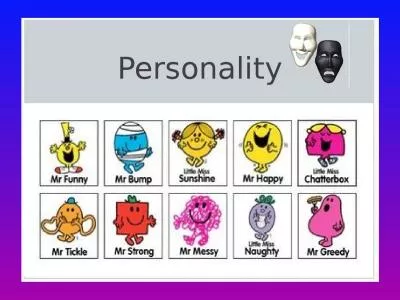PPT-Chapter 14 Personality Test Review
Author : test | Published Date : 2018-10-10
According to Freud the part of the psyche that stops a person from stealing is the Collective unconscious Id Superego ego Answer C Superego Gary feels that his younger
Presentation Embed Code
Download Presentation
Download Presentation The PPT/PDF document "Chapter 14 Personality Test Review" is the property of its rightful owner. Permission is granted to download and print the materials on this website for personal, non-commercial use only, and to display it on your personal computer provided you do not modify the materials and that you retain all copyright notices contained in the materials. By downloading content from our website, you accept the terms of this agreement.
Chapter 14 Personality Test Review: Transcript
Download Rules Of Document
"Chapter 14 Personality Test Review"The content belongs to its owner. You may download and print it for personal use, without modification, and keep all copyright notices. By downloading, you agree to these terms.
Related Documents

